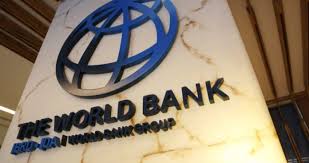The President of the Organization of Petroleum Exporting Countries, OPEC, Suhail al-Mazrouei on Wednesday rued the price volatility in the international crude oil market, describing it as undesirable for member-countries.
Mazrouei, who spoke after crude had its biggest one-day drop in two years, explained that the cartel members would prefer a more stable price environment.
To tackle the challenge in the global oil market, he disclosed that the OPEC and other large producers were working on a long-term plan to build spare capacity that would cushion the market from unexpected outages.
When Libya reopened key oil exporting ports on Wednesday, global oil prices fell sharply, with benchmark Brent futures plunging 6.92 percent, the steepest one-day drop in two years.
Al-Mazrouei told Reuters on the sidelines of a Canada-United Arab Emirates Business Council event in Calgary that “fluctuation is not good and we do not like to see lots of fluctuation in the prices.”
Tripoli-based Libya National Oil Corp explained that four export terminals were being reopened after a standoff that had shut down most of the OPEC member’s oil output. Libyan oil production has fallen to 527,000 barrels per day (bpd) from a high of 1.28 million bpd in February following port closures in late June, the NOC said on Monday.
The OPEC President, who said that his presence in Canada was aimed at boosting investment in oil exploration and production, expressed concerns that the fluctuations would continue as long as there is no long-term plan for production.
He said: “OPEC and non-OPEC are working on this long-term plan for market stability,” he said. While the group cannot order countries to invest to increase production,.
“I am confident that we have enough spare capacity to meet the target that OPEC and non-OPEC have taken.”
Meanwhile, Brent crude price rose more than $1 on Thursday as focus turned to a big drawdown in U.S. stockpiles, recouping some of the market’s heavy losses from the previous session that had been sparked by news that Libya would resume oil exports.
Brent crude was up 96 cents, or 1.31 percent, at$74.36 after earlier rising to $74.46. On Wednesday, the contract slumped 6.9 percent in its largest one-day percentage decline since Feb. 9, 2016.
U.S. crude rose 21 cents, or 0.3 percent, to $70.59, after falling 5 percent the previous session.
Fawad Razaqzada, an analyst at FOREX.com, stated in a note: “Both oil contracts have recently stalled around key long-term and psychologically-important levels at $80 and $75 respectively, as market participants weigh the risks of a potential correction in prices.”
He noted that the announcement by Libya’s National Oil Corp that four export terminals were being reopened, ending a standoff that had shut down most of Libya’s oil output, was the catalyst for a correction.
The reopening allows the return of as much as 850,000 barrels per day of crude into international markets.
But in the U.S. stockpiles are falling as refiners suck crude out of inventories to produce more gasoline for drivers in the peak summer season.
The Energy Information Administration confirmed on Wednesday that the U.S. crude oil stocks fell by nearly 13 million barrels last week, the most in nearly two years, dropping overall crude stocks to their lowest point since February 2015.




